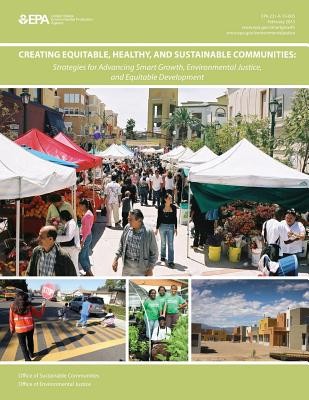
- We will send in 10–14 business days.
- Author: U S Environmental Protection Agency
- Publisher: CreateSpace Independent Publishing Platform
- Year: 2015
- Pages: 88
- ISBN-10: 1507684940
- ISBN-13: 9781507684948
- Format: 21.6 x 28 x 0.5 cm, softcover
- Language: English
- SAVE -10% with code: EXTRA
Creating Equitable, Healthy, and Sustainable Communities (e-book) (used book) | bookbook.eu
Reviews
Description
Communities across the country are integrating smart growth, environmental justice, and equitable development approaches to design and build healthy, sustainable, and inclusive neighborhoods. Overburdened communities are using smart growth strategies to address longstanding environmental and health challenges and create new opportunities where they live. Regional and local planners are engaging low-income, minority, and tribal residents in decision-making and producing more enduring development that is better for people and the environment. Community groups, government agencies, and private and nonprofit partners are cleaning up and investing in existing neighborhoods, providing affordable housing and transportation options, and improving access to critical services and amenities. This informational publication aims to build on past successes and offer other low-income, minority, tribal, and overburdened communities approaches to shape development that responds to their needs and reflects their values. It identifies strategies that bring together smart growth, environmental justice, and equitable development principles and that community-based organizations, local and regional decision-makers, developers, and others can use to build healthy, sustainable, and inclusive communities. These are places that provide clean air, water, and land; affordable and healthy homes; safe, reliable, and economical transportation options; and convenient access to jobs, schools, parks, shopping, and other daily necessities.
EXTRA 10 % discount with code: EXTRA
The promotion ends in 16d.10:19:28
The discount code is valid when purchasing from 10 €. Discounts do not stack.
- Author: U S Environmental Protection Agency
- Publisher: CreateSpace Independent Publishing Platform
- Year: 2015
- Pages: 88
- ISBN-10: 1507684940
- ISBN-13: 9781507684948
- Format: 21.6 x 28 x 0.5 cm, softcover
- Language: English English
Communities across the country are integrating smart growth, environmental justice, and equitable development approaches to design and build healthy, sustainable, and inclusive neighborhoods. Overburdened communities are using smart growth strategies to address longstanding environmental and health challenges and create new opportunities where they live. Regional and local planners are engaging low-income, minority, and tribal residents in decision-making and producing more enduring development that is better for people and the environment. Community groups, government agencies, and private and nonprofit partners are cleaning up and investing in existing neighborhoods, providing affordable housing and transportation options, and improving access to critical services and amenities. This informational publication aims to build on past successes and offer other low-income, minority, tribal, and overburdened communities approaches to shape development that responds to their needs and reflects their values. It identifies strategies that bring together smart growth, environmental justice, and equitable development principles and that community-based organizations, local and regional decision-makers, developers, and others can use to build healthy, sustainable, and inclusive communities. These are places that provide clean air, water, and land; affordable and healthy homes; safe, reliable, and economical transportation options; and convenient access to jobs, schools, parks, shopping, and other daily necessities.


Reviews